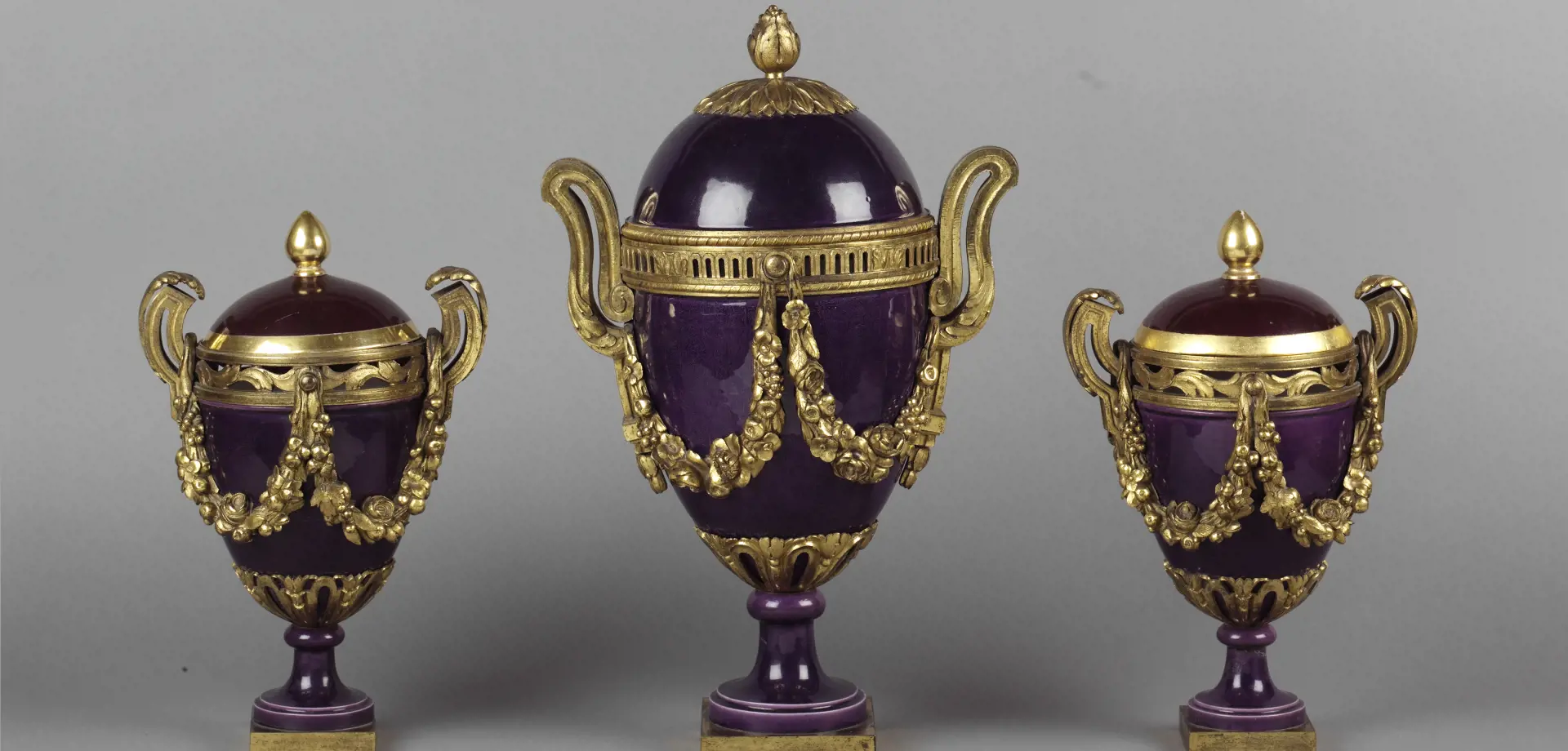In December 1768, King Louis XV gave to his Minister of France Henri-Leonard Bertin three violet coloured vases. The colour was newly formulated and was first introduced on the 24th of September 1767. We know this because the head of colour and chemistry at Sevres, Jean-Jacques Bailly recorded it in his handwritten Manuscrit de Bailly of 1785.
The colour was very largely experimental due to the enormous difficulty involved in its production, resulting from the fact that the formula contained alkaline. The drawback to alkaline is that it contains oxide which liquifies when it is subjected to heat, causing the colour to run or bleed and becomes washed out when fired. Alternatively, the ground may turn black if applied too thickly. The risk and cost involved in making these vases makes them both rare and prized.
In 1767, Henri-Léonard Bertin became the ‘commissaire du Roi' in charge of the Sèvres factory. He was granted by the king each year presents from the factory, as his title permitted. At the start of the Revolution he escaped to Germany where he died in Spa in 1792.


